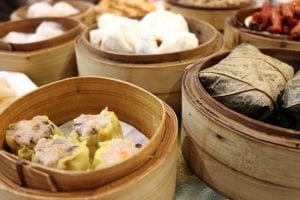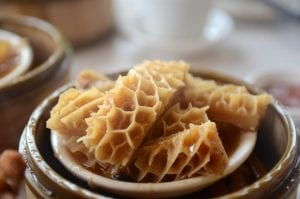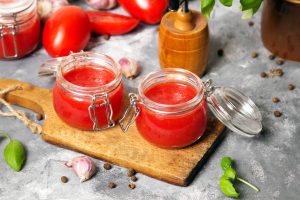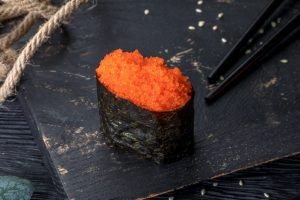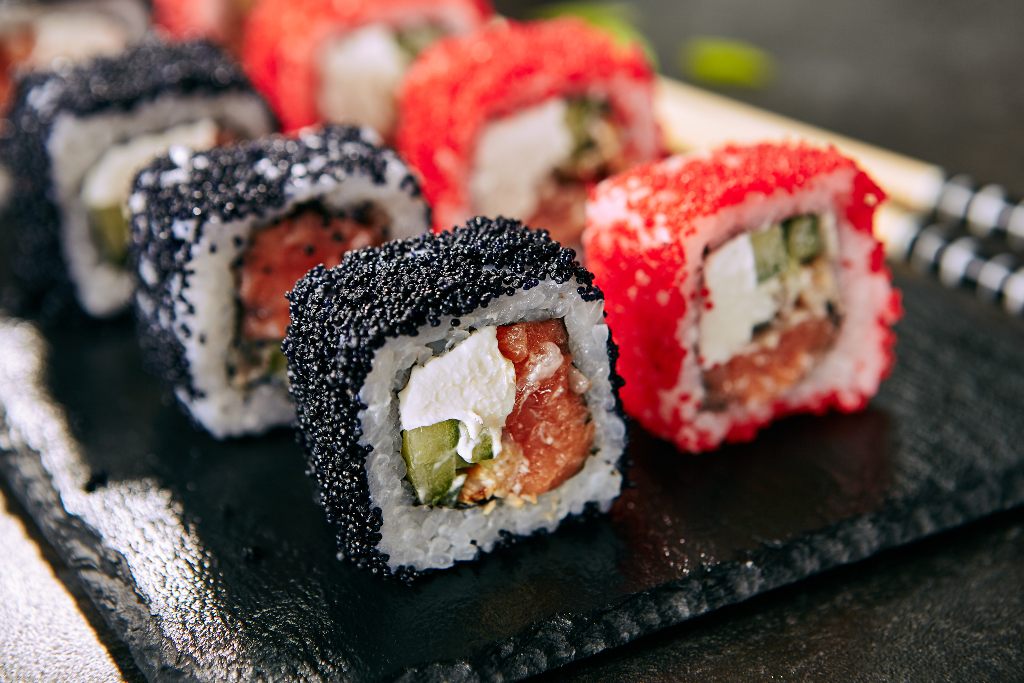
Fish eggs or roe is a Japanese delicacy. And if you’ve ever tried sushi rolls or sashimi before, then you might have already encountered one of the most popular types called tobiko. Often used interchangeably with another common roe called masago, these small and colorful balls of seafood flavor might just be the ingredient you’re looking for to spruce up your meals!
So keep on reading to learn more about tobiko. Expand your knowledge about this Japanese delicacy by getting to know everything about it— from its sources to the different ways of eating it. We’ll also be breaking down the differences between masago vs tobiko below.
What Is Tobiko?
Tobiko is the Japanese word for flying fish eggs or roe. Fishermen harvest this product during the spawning season of the fishes in spring, near Taiwan. In terms of culinary use, it’s a common ingredient for sushi and sashimi — two well-known Japanese staples beyond the different types of ramen. A popular topping and add-on to meals, this ingredient imparts a layer of texture and flavor to each dish.
What Does Tobiko Taste Like?
Often seasoned with condiments like soy sauce, the salty taste of tobiko is what initially comes through with each serving. This is backed by a smoky element, as well as a subtle hint of sweetness at times.
Additionally, this fish product may have more layers of flavors depending on how it was processed. Depending on the type, tobiko eggs may also have a citrusy or spicy taste. Learn more about this in the following section below:
Types of Tobiko
In its purest form, the natural color of tobiko is red orange. Although, it usually undergoes a dyeing process that involves natural ingredients before being sold in markets. As a result, it’s available in different colors:
- Red Tobiko – This is the most well-known out of all the different types of tobiko. With the help of beet extract, the red-orange color of the flying fish roe is intensified into a bright red hue.
- Black Tobiko – Dyed with squid ink, the natural color of tobiko is completely lost in this variation. It’s replaced by a pitch black color, and the salty flavor of the fish product is heightened. This is the kind of flying fish roe that’s used in black sushi.
- Green Tobiko – This type is dyed using the popular Japanese horseradish paste called wasabi, hence why it’s also called wasabi tobiko. Apart from the salty flavor of the standard roe, this also boasts a spicy kick.
- Yellow Tobiko – Also known as yuzu tobiko, this variation is processed with an East Asian fruit called yuzu citrus. As a result, it has a tart characteristic and a bright yellow appearance.
READ ALSO: What Is Oshinko? Learn All About It and How To Make Oshinko Roll
Ways to Eat Tobiko
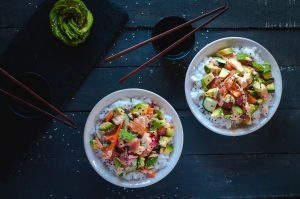
Tobiko is a common ingredient in several Japanese dishes. Beyond that, it’s also suitable as a topping or add-on for meals outside of Asian cuisine. Here are some of the most popular ways of incorporating this fish product into your food:
- Tobiko Sushi – Flying fish roe lends a bright color and a burst of fishy flavor to Japanese sushi rice dishes like gunkan maki, tobiko roll, and even California roll sushi bowls!
- Sashimi – This raw fish dish is made even better when topped with tobiko. The roe adds a layer of crunch to the smooth fish meat, as well as a subtle smokey element to the dish.
- Pasta – Apart from having this ingredient raw, you can also cook it in an Asian-inspired pasta sauce. Bring a satisfyingly crunchy texture and a seafood element into different types of pasta dishes with tobiko.
- Dips – Make all kinds of tobiko sauce by incorporating this fish product into dips like creamy mayo or cheese for crackers and chips. Like in the other food items mentioned above, it’ll add a layer of crunchy texture and salty flavor to this appetizer.
- Salad – Tobiko is a great add-on for sprucing up a bowl of crisp salad. After you’ve tossed all the components together, finish off this dish of greens by sprinkling a spoonful of crunchy flying fish roe on top.
READ ALSO: Nigiri vs Sashimi vs Maki: How Exactly Are They Different?
Tobiko vs Masago
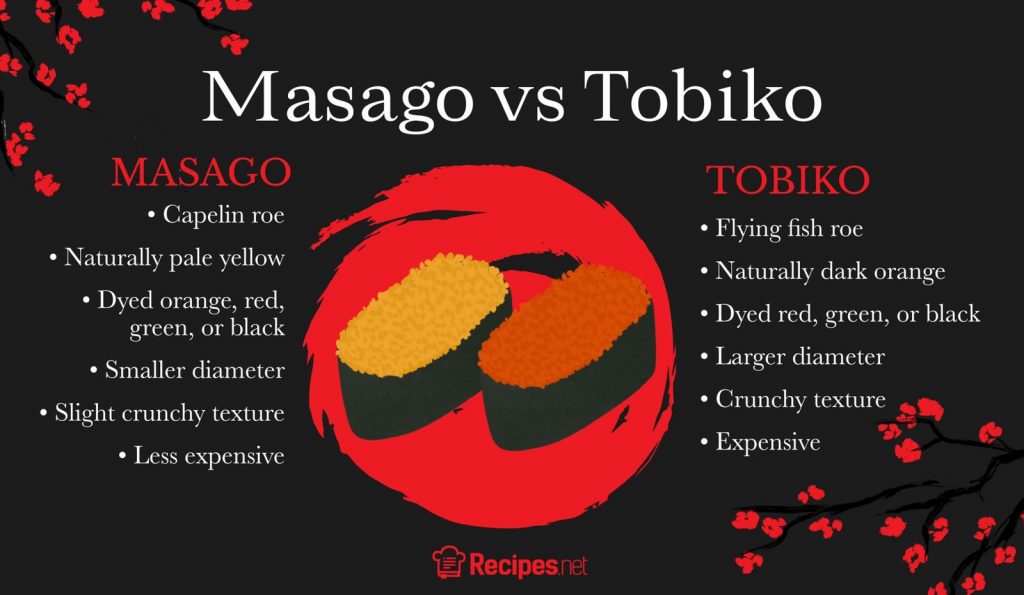
Tobiko is often mistaken for another type of roe called masago. So in this section, we’ll be breaking down the exact differences between the two.
You already know that tobiko pertains to flying fish roe that’s often used in sushi and sashimi dishes. In terms of flavor, it’s strong, briny, and smoky. With a natural reddish-orange color, sometimes it’s dyed with natural ingredients to achieve a bright red, green, or black color. Generally, the diameter of each flying fish roe is 0.5 to 0.8 millimeters, offering a crunchy texture with each mouthful.
Meanwhile, masago comes from a different kind of fish species altogether. In particular, it’s a kind of smelt roe that comes from capelin forage fish. Briny and with a subtle sweet taste, it’s a popular cheaper alternative to the more expensive tobiko. It’s best in rice and fish dishes like these mahi mahi tacos. The confusion stems mostly from the similarity in appearance of these two roe types, although masago normally is bright orange in color with a one-millimeter diameter. Hence, tobiko is slightly larger than masago, but also smaller than ikura or salmon roe (another popular fish egg variety used in sushi).
Health Benefits
Tobiko contains a good amount of nutritional benefits. First of all, it’s packed with Omega fatty acids that aid in reducing inflammation, as well as promote better heart and liver health. With a good amount of protein for building muscles and low calories for weight loss, this fish product is a good ingredient to incorporate into your diet.
However, it’s still best to have tobiko in moderation despite all of these health benefits. It contains a high amount of cholesterol after all.
Where to Buy Tobiko
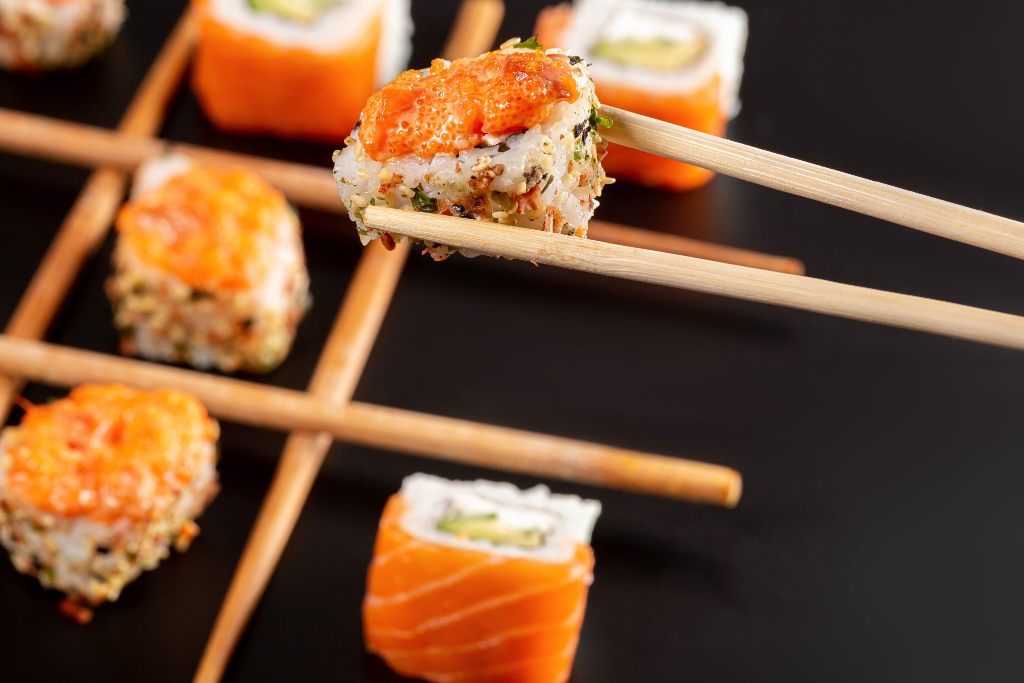
If you need tobiko immediately, it’s best to check out physical stores to get it. For the most part, this product is available all year round in Japanese and Asian grocery stores. As with purchasing other food items, make sure to check their labels, expiration dates, and seals. The size of the package is also a factor to consider. For personal consumption, we recommend getting a smaller size as most recipes only call for a small amount of it. However, you’re welcome to go for bigger sizes if you’ll be using it for large batches of food.
READ ALSO: 40 Best Ramen Toppings for Your Homemade Noodle Soup
Another option you have is to check out online platforms like Amazon, or online specialty food shops like Gourmet Food Store. However, it might be a while before the product is delivered. Finally, we suggest doing a quick background check on the seller and the product being sold before making your purchase. See what the customers are saying, and go for those with the best reviews.
How to Store Tobiko
Tobiko is highly perishable and can spoil relatively quickly if it isn’t stored properly. Any leftovers may change in terms of taste, odor, color, and consistency (which isn’t ideal). In particular, you’ll know a spoiled batch of flying fish roe if they smell funky and unpleasantly fishy. Preserve the quality of this fish product by following either of these two methods:
Refrigerate
This method is ideal if you’re planning on consuming the flying fish roe almost immediately. Through refrigerating tobiko, you won’t have to spend extra time and effort thawing it out. You can have it directly from the fridge to your food.
If the tobiko is in a sealed and unopened container, you can immediately proceed to store it in the fridge. This will stay good for up to two weeks. Meanwhile, if you’ve opened it already, make sure to cover it again before storing it. This has a shorter guaranteed shelf life though, as it will only stay good for three days maximum.
Freeze
On the other hand, the freezer method is best for long-term preservation. If you don’t see yourself consuming the pack of tobiko within the span of days indicated above, we highly recommend storing it this way.
First, make sure to cover up the product or transfer it into your best freezer container, if it’s already been opened. Then, keep it in the freezer for three to six months. For the best outcome, avoid thawing then refreezing the tobiko. Do not thaw out the whole canister if you’ll only be needing a small amount, as this may affect the quality of the product. Simply scoop out how much you need to thaw for a dish, and leave the rest in the freezer.
Frequently Asked Questions
Is tobiko caviar?
No, tobiko is not caviar. Although both of them are types of roe, they come from different fish species. The source of tobiko is flying fish, while the caviar is from sturgeon. In addition to that, they also vastly differ in terms of overall appearance and flavor. The flying fish roe is smaller in diameter, and is available in red, green, and black varieties. Meanwhile, the sturgeon roe is larger and almost always black in color. They’re both briny, although tobiko also offers a slightly sweet sensation that isn’t normally present in caviars.
Can you eat tobiko raw?
Yes. As a matter of fact, this is the most popular way of consuming tobiko, as a garnish. Although, if you’ve read the previous sections, you also know that it’s also possible to cook this ingredient or incorporate it into sauces to use for dips or pasta.
Was this page helpful?
Read Next: What Is Yuca (Cassava) And How to Cook It?
